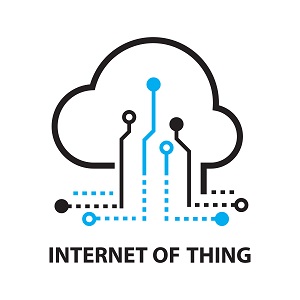The Internet of Things (IoT) has revolutionized how we interact with the world around us, and it’s estimated that active IoT devices will surpass 25.4 billion in 2030. IoT has made data sharing ubiquitous, enabling devices from smart homes to connected cars. However, real-time data sharing — which requires seamless and secure data transfer from connected devices — comes with its own set of challenges and concerns. But as IoT isn’t slowing down, how can organizations address them?
Technical Challenges
Network latency is a significant challenge organizations face when implementing real-time data sharing in IoT. With billions of connected devices generating data in real time, ensuring that the data is transmitted and processed quickly enough to be helpful can be difficult. This is particularly true when the data needs to be analyzed and acted upon immediately, such as in healthcare or emergency response scenarios.
Another technical challenge that organizations face is bandwidth limitations. For example, high cardinality issues increase when you work with large-scale IoT data sets in industries like manufacturing or automation. If a factory has 5,000 devices, each with 100 sensors across 100 warehouses, this leads to a cardinality of 50 million. As the number of connected devices grows, the amount of data generated and transmitted also increases. This can lead to network congestion and slow or unreliable data transmission.
Another critical issue in real-time data sharing in IoT is the need for centralization. For example, large manufacturing companies in industries such as utilities and automotive often develop or acquire systems for data collection and operations within each site. For some organizations, the data centralization challenge is exacerbated by different sites relying on different data historians, which makes it difficult to share, ingest, or query data with other devices or systems.
The Security Concerns
The overwhelming data volume that comes with IoT has created security concerns. Data privacy is among the top concerns because the number of entry points created with connected devices can leave sensitive information vulnerable to hacking. Additionally, information could be easily shared with the wrong parties without proper precautions, leaving organizations at risk.
Recently, the White House has taken a more aggressive stance to prioritize securing IoT and outlined plans to mature its security measures in the latest National Cybersecurity Strategy. This impacts products from consumer goods to industrial devices and technology for critical infrastructure like power grids and water treatment facilities.
Organizations must comply with new guidelines and invest in security measures for their devices to ensure their data is protected and authorized by the correct stakeholders. This investment in solutions for secure IoT infrastructure will allow for seamless and safer data transmission between devices, protecting them from cyber threats that could have damaging results.
The Solutions
To address these challenges and security concerns, organizations need to take a proactive approach to implement real-time data sharing in IoT. While the ideal first step is to invest in new IoT infrastructure, the rip-and-replace tactic is not always feasible when companies have already invested in their current infrastructure.
A more practical approach is implementing APIs and connectors to bring data historians into the modern age by making it easier for them to share information with other devices and systems. Data historians aren’t going anywhere, so organizations must find ways to utilize them to develop meaningful insights. By doing this, organizations can now use data historians to collect data from various sources and share that data with other applications. This adds value as businesses can now improve the functionality of data historians without a heavy lift or costly investment.
As noted earlier, organizations need to enhance their security measures. This includes complying with the latest federal guidance and creating internal policies for connected device use. It can also mean utilizing solutions to ensure safer data transfer between devices and networks.
Real-time data sharing is transforming how we live and work. But to make the most of this technology, organizations must address the challenges and security concerns that come with it. By investing in IoT infrastructure, implementing IoT standards, and enhancing security measures, organizations can unlock the full potential of real-time data sharing in IoT.
About the Author

Jeff Tao is the Founder, CEO, and Core Developer of TDengine, the popular open-source time-series data platform.
Sign up for the free insideBIGDATA newsletter.
Join us on Twitter: https://twitter.com/InsideBigData1
Join us on LinkedIn: https://www.linkedin.com/company/insidebigdata/
Join us on Facebook: https://www.facebook.com/insideBIGDATANOW





Speak Your Mind